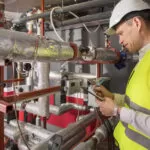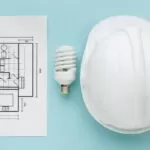As a building owner in the dynamic state of Texas, where climate demands effective ventilation systems, optimizing your exhaust fan setup is crucial for maintaining a comfortable and efficient indoor environment. This article will guide you through the essential aspects of exhaust fan systems, helping you make informed decisions to enhance the overall functionality of your property.
Table of Contents
Understanding the Importance of Exhaust Fans
Exhaust fans play a pivotal role in maintaining indoor air quality and controlling humidity levels. In Texas, where temperatures can soar, effective ventilation becomes paramount to ensure a comfortable atmosphere for occupants. These fans help expel stale air, odors, and moisture, preventing the formation of mold and mildew, which are common challenges in humid climates. Properly functioning exhaust fans also contribute to energy efficiency by reducing the load on heating and cooling systems.

Choosing the Right Exhaust Fan
Selecting an appropriate exhaust fan is the first step in optimizing your ventilation system. Consider the size of the space and the volume of air that needs to be exchanged per hour. A fan with a higher cubic feet per minute (CFM) rating is suitable for larger areas, while smaller spaces may require a lower CFM rating. Additionally, opt for energy-efficient models to minimize operational costs over the long term.
Strategic Placement for Maximum Efficiency
Once you’ve chosen the right exhaust fan, strategic placement is key to maximizing its efficiency. Install fans in areas prone to high humidity, such as kitchens and bathrooms, to swiftly remove moisture and prevent the growth of mold. In commercial buildings, consider placing exhaust fans near areas with high foot traffic to ensure continuous air circulation. Proper placement ensures that the fans can effectively remove pollutants and maintain a healthy indoor environment.
Regular Maintenance for Longevity
To ensure the longevity and optimal performance of your exhaust fan system, regular maintenance is crucial. Clean fan blades and housing periodically to prevent the accumulation of dust and debris, which can hinder airflow. Check for any signs of wear or damage and promptly replace worn-out parts. By keeping your exhaust fans in good condition, you not only extend their lifespan but also maintain the efficiency of your overall ventilation system.
Energy-Efficient Solutions
In the pursuit of energy efficiency, consider investing in variable-speed exhaust fans. These fans adjust their speed based on the level of ventilation needed, providing optimal performance while minimizing energy consumption. Additionally, explore the possibility of integrating smart controls that allow you to schedule fan operation according to occupancy patterns, further optimizing energy usage.
Compliance with Building Codes
Before making any modifications to your exhaust fan system, it’s crucial to ensure compliance with local building codes and regulations. Texas has specific requirements for ventilation systems to guarantee the safety and well-being of occupants. Familiarize yourself with these codes and seek professional guidance if needed to avoid any legal complications.
Weather Considerations in Texas
Texas experiences a range of weather conditions, from scorching summers to chilly winters. Tailoring your exhaust fan system to accommodate these variations is essential. In hot weather, prioritize removing heat and moisture efficiently, while in colder months, focus on maintaining a comfortable temperature without compromising indoor air quality. An adaptable exhaust fan system ensures year-round comfort for building occupants.
Conclusion
Optimizing your exhaust fan system is a practical and cost-effective approach to enhancing the overall efficiency of your building in Texas. By choosing the right fans, strategically placing them, performing regular maintenance, and considering energy-efficient solutions, you can create a comfortable and healthy indoor environment. Stay informed about local building codes and weather considerations to ensure your exhaust fan system is well-suited to the unique challenges posed by the dynamic Texas climate. Implementing these measures will not only benefit your occupants but also contribute to the long-term sustainability of your property.




